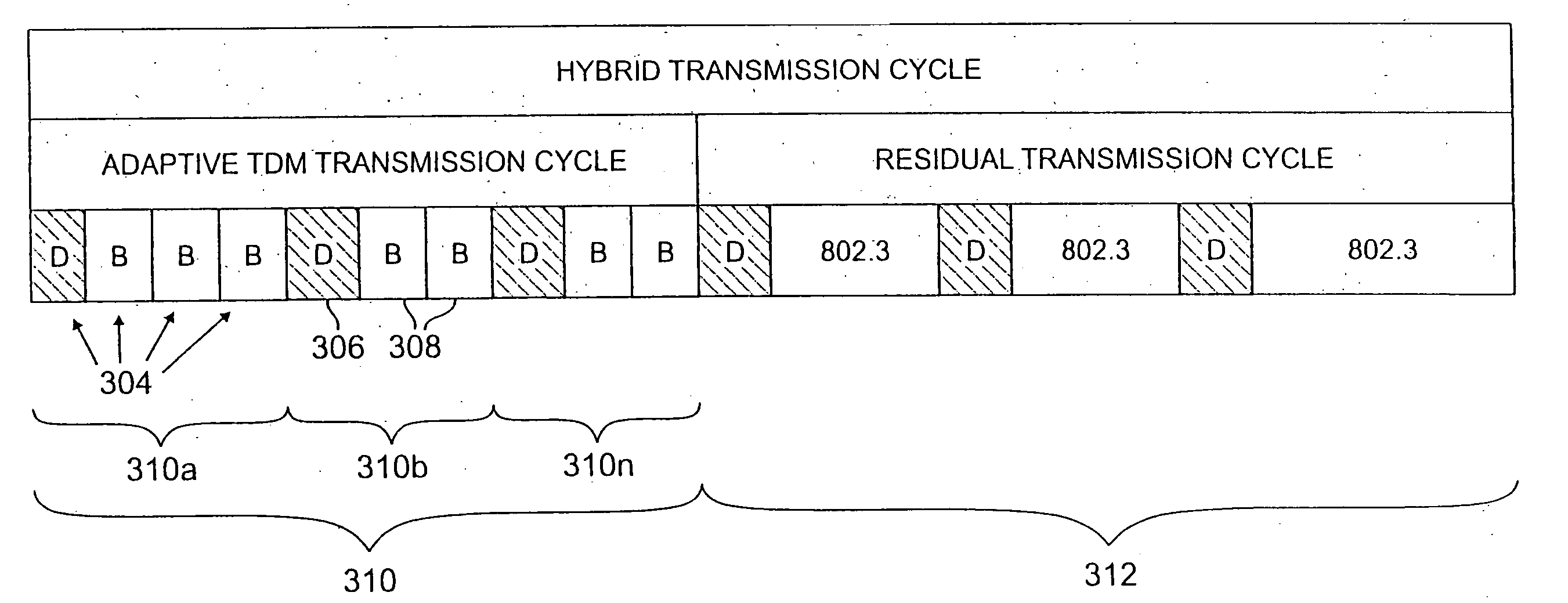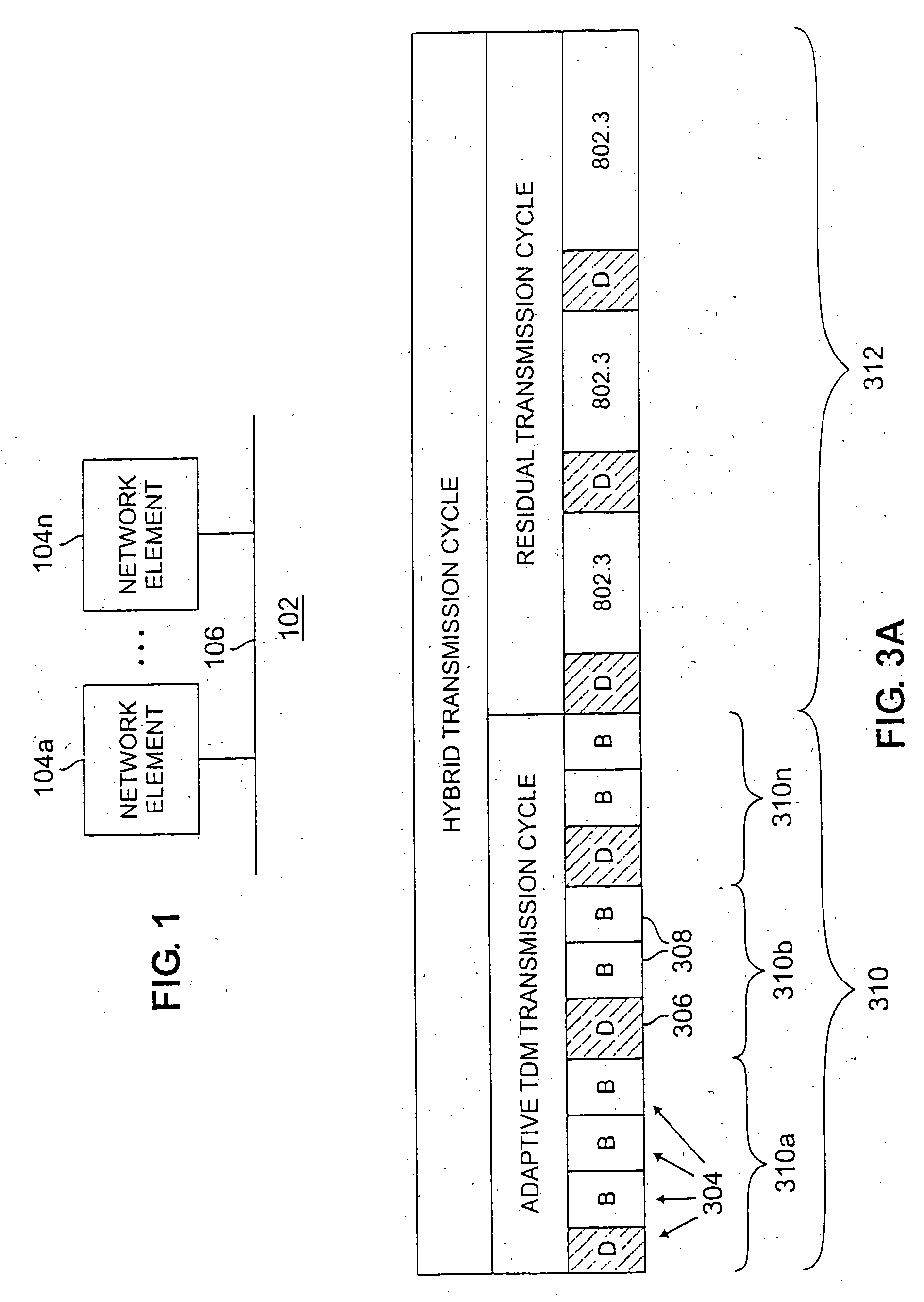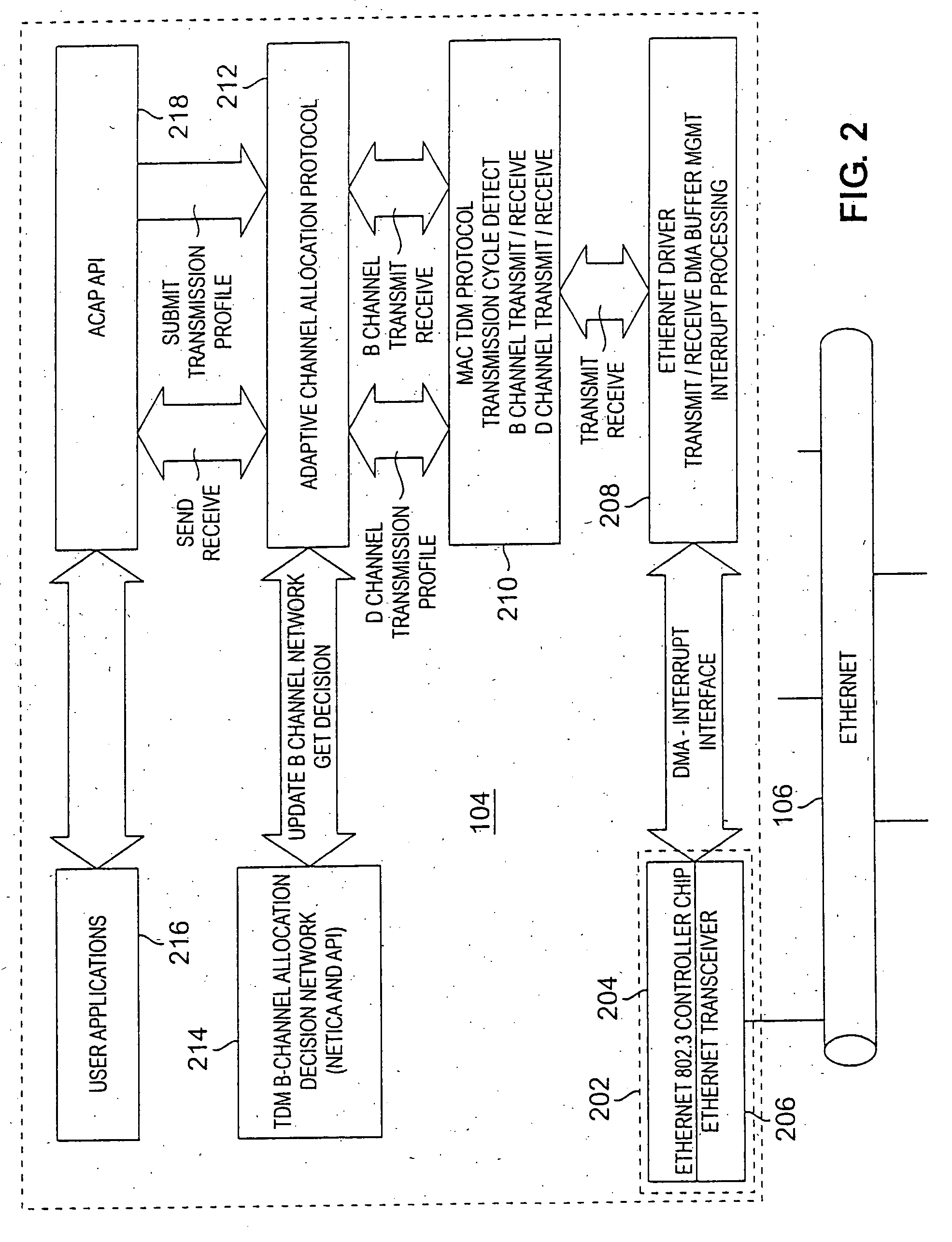Adaptive transmission in multi-access asynchronous channels
a multi-access asynchronous channel and adaptive transmission technology, applied in the field of communication, can solve the problems of heavy traffic load, inability to ensure priority, and degradation of throughput, and achieve the effect of preventing unacceptable latency
- Summary
- Abstract
- Description
- Claims
- Application Information
AI Technical Summary
Benefits of technology
Problems solved by technology
Method used
Image
Examples
Embodiment Construction
[0017] With reference now to the figures, and in particular with reference to FIG. 1, a block diagram of a network in which a preferred embodiment of the present invention may be implemented is depicted. Network 102 includes a plurality of network entities 104a-104n coupled to a shared transmission medium 106. Network entities 104a-104n may be data processing systems including network interface cards or adapters, or may be communications devices such as telephone handsets or the like. Shared transmission medium 106 may be coaxial cable, RJ-11 wiring, line-of-sight radio frequency (RF) spectrum, or some similar wired or wireless transmission medium. While not limited, the number of network entities 104a-104n which share a single network transmission medium 106, should be reasonable. An excessive number (e.g., 500 or more) of network entities 104a-104n within a single network 102 will, even when they have nothing to transmit, waste significant bandwidth in the present invention.
[0018...
PUM
 Login to View More
Login to View More Abstract
Description
Claims
Application Information
 Login to View More
Login to View More - R&D
- Intellectual Property
- Life Sciences
- Materials
- Tech Scout
- Unparalleled Data Quality
- Higher Quality Content
- 60% Fewer Hallucinations
Browse by: Latest US Patents, China's latest patents, Technical Efficacy Thesaurus, Application Domain, Technology Topic, Popular Technical Reports.
© 2025 PatSnap. All rights reserved.Legal|Privacy policy|Modern Slavery Act Transparency Statement|Sitemap|About US| Contact US: help@patsnap.com



